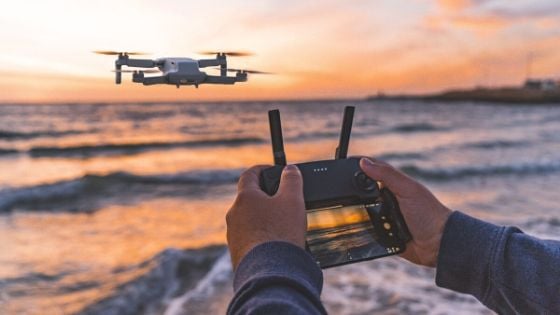Drones have been a hot topic in the video industry over the past 18-24 months. With drone technology improving at breakneck speeds and becoming cheaper and easier to use every day, it's no wonder that more and more people are enquiring about the use of drones in their videos.
But what really are drones? What are the legalities behind them? And the ultimate question, does my video need a drone? We will answer some of the common questions that we get regarding drones here in this blog post!
What is a Drone?
The more official name for drones is Unmanned Aerial Vehicle or UAV. Essentially, this means any type of unmanned flying device, ranging from toy planes through to military surveillance planes and missiles. These can be controlled remotely by an operator or through software utilising data from onboard sensors and GPS.
In the video production industry, when we refer to drones, it is in the context of a remote controlled “copter” with a camera attached. As with any technology, there are various types of drones at various price points that could benefit or hinder your production.

What are the legal requirements for drone use?
All drone use in Australia is regulated by the Civil Aviation Safety Authority (CASA). There are different requirements for both personal and commercial drones, with commercial operators needing an RPA operator's certificate (ReOC) and individual operators needing a remote pilot licence (RePL). With drones becoming cheaper and easier to access, there are more people offering their services at cut rate prices - however, these operators may not have the relevant qualifications.
Where can a drone be used?
Even fully qualified drone operators cannot fly their drones freely when they want. Whilst drone regulations have relaxed slightly recently, there are certain flight areas that need additional approval. All qualified operators will know these specific regulations and how to obtain permits.

What types of drone are there?
Much like when you are choosing the right camera for your job, there are numerous advantages and disadvantages to choosing a drone. Do you need 4k? Slo-mo? Are you planning on shooting in low light? Each of these questions will help you choose the drone that will work best for your video.
At the lower end, drones come with a fixed camera - with both the drone and camera operated from the same controls. The advantages of these drones are their low cost and ease of use, with only one operator being required. The advancements in technology has allowed these 'all in one' drones to offer high production values with some even allowing 4k video.
At the higher end, drones allow for more customised setups with a choice over camera and lens. With this choice, you can match cameras with your production or you can use a specific camera for your scenario.
These drones are usually controlled by two operators, a pilot and a camera operator. Working in unison, they can provide more a more cinematic shoot. The downside of this is obviously a higher cost.

Here at Visual Domain we love to stay ahead of the game with all new technology, and drones are no exception. If you have an exciting project that you feel will benefit from the use of drones, don’t hesitate to contact us and we would love to discuss it with you. Stay tuned to our blog and social media for any new and exciting developments relating to drones or video production in general.

Written by
DAVE MALLEN - TEAM LEADER









